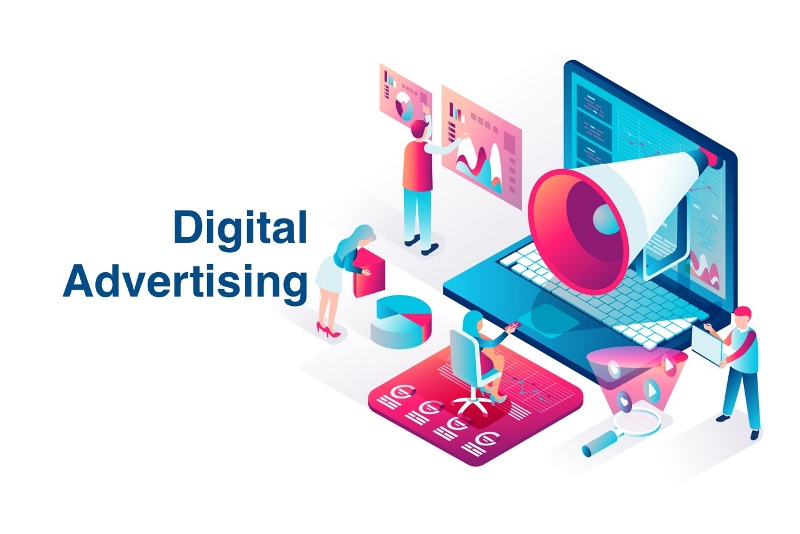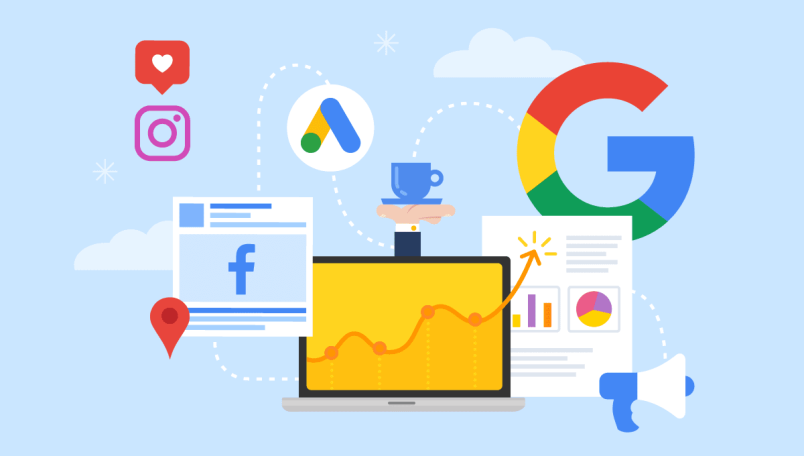The good thing today is, with no printing costs, digital ads are a lot cheaper than print ads. Digital ads are something that a reputed brand design agency can craft beautifully. They are also more immediate. Digital ads can take the consumer directly to a web page to make the purchase then and there. It doesn't require persuading a consumer to travel to a brick-and-mortar store.
In this blog, we'll look at digital advertising, its goals, and the four steps in the digital advertising process. So let's begin.
Digital Advertising

Digital advertising is all about distributing promotional content through online channels. In simpler terms, it's advertising for the internet. Design experts or a great brand design company can create compelling promotional content. Online advertising is a separate practice although people often include it as part of a brand's overall digital marketing strategy. Usually, it involves purchasing advertising space for campaigns. But the marketing often prioritizes organic growth through existing channels like email newsletters, blog content, social media campaigns, search engine marketing, and others. We can also weave digital ads into these as well.
Also, Read | A Brief Introduction – Impact Of Design On Advertisements
The Goals of Digital Advertising

The goals of an online advertising strategy vary from campaign to campaign. Likewise, brand identity design services keep up with it. They are likely a component of a business's overall yearly or quarterly goals. Digital advertising, as in the traditional advertising practice, outlines a combination of three general objectives: inform, persuade, and remind.
- Inform: establish a brand or product awareness
- Persuade: increase revenue through customer conversion
- Remind: keep a brand at the forefront of a consumer's mind
Now, let us understand the four steps to digital advertising.
You might also be interested in – Strategies To Establish An Effective Typography Hierarchy On Your Website
The Four Steps to Digital advertising

We now know what digital advertising is, how it works, and the different options available. Now, let's dive into the digital advertising process from start to finish.
Strategy
For your online ads to succeed, begin with a campaign concept backed by research. Begin by articulating the problem we are trying to solve, and then connect this to the audience we are trying to reach. For instance, is a landing page not receiving enough traffic? Tools like Google Analytics uncover demographic information about who is visiting these pages, which gives us a target for growth. Have your past adverts gone unnoticed? Keyword research and search tools like Google Trends show which topics interest people and the questions they have, questions your campaign can answer. If it's a hard time standing out from the competitors, analyze your competitor's current advertising strategy. It gives an idea of what works for them, and customer reviews of their products can tell what aspects of their service are lacking.
With your campaign strategy ready, the next step is to set up a formal brief. It will document your plan and everything we need to implement it. We want to account for the following:
- Campaign title and description
- Goals and success metrics
- Target audience
- Distribution channels
- Content materials
- Budget
It is always good practice to draft a brief so that all parties involved are on the same page.
You might also be interested in – Exponentially Advertise Your Business With Video Animation Services
Budgeting
Next, take all of your grand ideas from the strategy phase and make decisions about how to make them real. Budgeting and allocating funds is no exact science. It depends on your own revenue goals and the marketplaces we are vying for. Pay particular attention to these three main concerns:
- People: The medium determines how many people to involve in the campaign. For instance, if it's a video ad, it may require a budget for a video production team.
- Distribution: Keep in mind that each platform has different pricing models. For instance, social media advertising operates on an auction-like bidding system for advertising space. With the time length for displaying each ad also increases your ad spend.
- Schedule: Scheduling details the scope of your campaign, both in planning and execution.
Production
With your strategy, budget, and schedule in place, have a sturdy framework to guide through production. Earlier we made an overall campaign document, but now we need additional, more specific briefs for each aspect of your ad campaign, delivered to the responsible parties. Once we've connected with the talent and delegated the appropriate assignments, work with creatives to keep projects on schedule. Offer regular feedback to ensure that the campaign is coming together with the way we thought.
Distribution
Now we have done everything we can do to prepare for and produce the ad. Finally, it's time to unleash it into the digital sphere. Every channel has a distinct process for distributing the ad. But make it as simple as following the platform's instructions and uploading your content.
It is good to test your ad before distributing it, but even this does not guarantee that viewers respond the way we expect. Sometimes, at the time when your ad goes live and presented to the whole of the internet, new problems may arise. The great thing about digital advertising, though, is that we can check results quickly and implement changes mid-campaign.
Conclusion
Digital advertising alone can boost sales, promote brand awareness, and connect with your audience in a much faster way. But it is only when we have solid advertising content and design to back it up. Contact our brand design services for assistance in the design part of your digital advertising.
Image source: Google images



